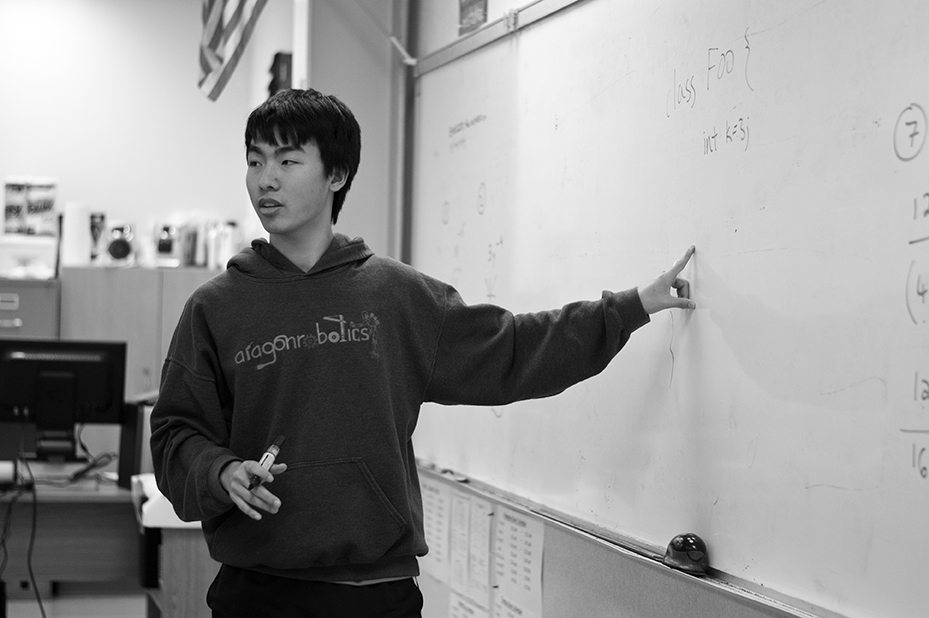

In an age where computers have become an integral part of our lives, many Aragon students have started to explore the world of computer programming. Computer programming is essentially the process in which a human tells a computer what to do through a set of instructions. However, many programmers think of programming as more than just inputting commands into a computer.
Senior Bruce Zhang, president of Programming Club, says, “Programming is an art where people can solve problems. Instead of just answering problems outright, one can find the hidden intricacies and create beautiful solutions.” Programming is used in many of the computer-related activities we engage in every day.
Sophomore Masao Dahlgren says, “In professional applications, [programming] is used for computer programs, which are used for a lot of different things: organization, project management, 3-D design, those kinds of things.” Programming is not just used in the professional world. Many Aragon students have used their programming skills to create their own projects.
Bruce Zhang says, “Recently, I have made an MP3 player which was a combination of circuit work and coding. I also made a website that I wanted to use for a club, but I never got around to putting it up. Also, I have made my own calculator totally based on Jscript [JavaScript]. Everything is a programming project.”
Junior Darrell Ten, a member of the Aragon Robotics Team, says, “In PR and media [for the robotics team] we use programming to build the website. But in our builds sub-group, we use programming for the robot.”
To kindle Aragon students’ passion for programming, the Aragon Programming Club meets on Wednesdays to discuss programming techniques, study for the AP Computer Science exam, and prepare for the upcoming programming competitions this spring.
Junior Nathan Zhang, vice-president of Programming Club, says, “This year, we’re planning on participating in Stanford’s ProCo competition as well as Gunn and Harker’s competitions. In a competition, you have about three hours with one computer and three people on your team. You have a list of about ten to twenty problems where you solve them as quickly and as efficiently as you can.” Just like with all competitions, participants must train to achieve success. But all that training can become strenuous.
Nathan Zhang says, “Programming is sort of one of those things where you could spend five minutes a day on it or you could spend three, four hours, depending on how much you love it. Personally, I spend three to four hours a day on it, and it has basically become the center of my life.” Nathan Zhang, like many programmers, believes one must truly enjoy programming to become a successful programmer.
Dahlgren agrees, saying, “If you try and force yourself to do it because you think its going to be good for your job in the future, you’re going to end up hating programming, and that’s something you definitely don’t want to end up doing.”
However, Bruce Zhang feels there are many stereotypes about programmers that shed a bad light on programming.
Bruce Zhang says, “The social media portrays programmers as nerds. However, we’re just people who have a passion in programming. We’re no different than people who enjoy sports or video games. We also love to find time to hang out and play. We’re normal people.”
Nathan Zhang disagrees, “Its more of the impression you make about how you program. If you use the computer as part of your life, you’re not really considered a nerd, but if the computer is considered the main part of your life, and you are in love with your computer, then at that point, I believe you take on more of the nerd stereotype.”
Today, programming has taken on a whole new meaning. It is no longer a task at work or an after-school hobby.
Nathan Zhang concludes, “Programming is a way of life.”



